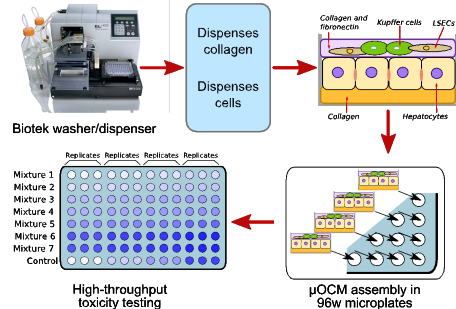February 3rd CTE Seminar Presentations
Student Presentation 1
Title: Computational Construction of Toxicant Response Networks
Presenting author: Jeffrey Law - Genetics, Bioinformatics and Computational Biology, Virginia Tech
Research Group: Computational Systems Biology

Efforts such as the EPA's ToxCast seek to quickly and efficiently screen thousands of chemicals for potential human and environmental effects. For each chemical, these efforts study a fixed set of proteins and pathways and they do not consider the complex network of interactions among assayed proteins and pathways. We seek to connect the responding proteins in the context of the underlying network of regulatory and physical interactions.
Our approach is to compute the k shortest paths (using PathLinker) from perturbed receptors to perturbed transcription factors (TFs) in the human protein-protein interaction network to build a response network for each toxicant. These toxicant response networks may reveal important intermediate proteins that have not have been tested and physiological processes that have not been previously implicated in connection with the chemical.
To test the validity of our results, we show literature support for the response networks of a few relevant or well-studied chemicals. For chemicals which less is known, we perform permutation testing to test the statistical significance of the computed response networks.
Student Presentation 2
Title: High-Throughput Drug Screening using 3D Micro Organotypic Liver Models
Presenting Author: Sophia Orbach - Chemical Engineering, Virginia Tech
Research Group: Laboratory for Biomaterials and Tissue Engineering

There are thousands of chemicals whose effects on human and animal populations are unknown or only partially understood. Specifically, the combinatorial effects of these chemicals to the liver are unknown. Traditional in vitro and in vivo studies, while informative, can be laborious and time-consuming.
High-throughput screening (HTS) methodologies can rapidly test individual and cocktails of chemicals across a wide range of concentrations. To date, HTS assays on liver cells have primarily been conducted on hepatocyte monolayers. When the principal liver cell types, hepatocytes, are cultured in monolayer, they begin to lose liver-specific functions within 24 hours. Moreover, these models fail to recapitulate the complex interplay of hepatic cells and stratified organization of the liver. We have assembled a novel micro liver organotypic culture model assembled in a 96-well plate (denoted as μOCM) that can be used to rapidly screen individual and mixtures of chemicals. A novel aspect of the μOCMs is the use of automated procedures.
An automatic solution dispenser was used to coat wells with collagen, seed the hepatic cell types, change medium, administer chemicals, and conduct assays within the 96-well plates. These models have successfully exhibited mechanisms of cell death and chemical interactions reported in vivo . The combination of HTS methodologies and these μOCMs has the potential to transform current testing of pharmaceuticals and environmental toxicants.

